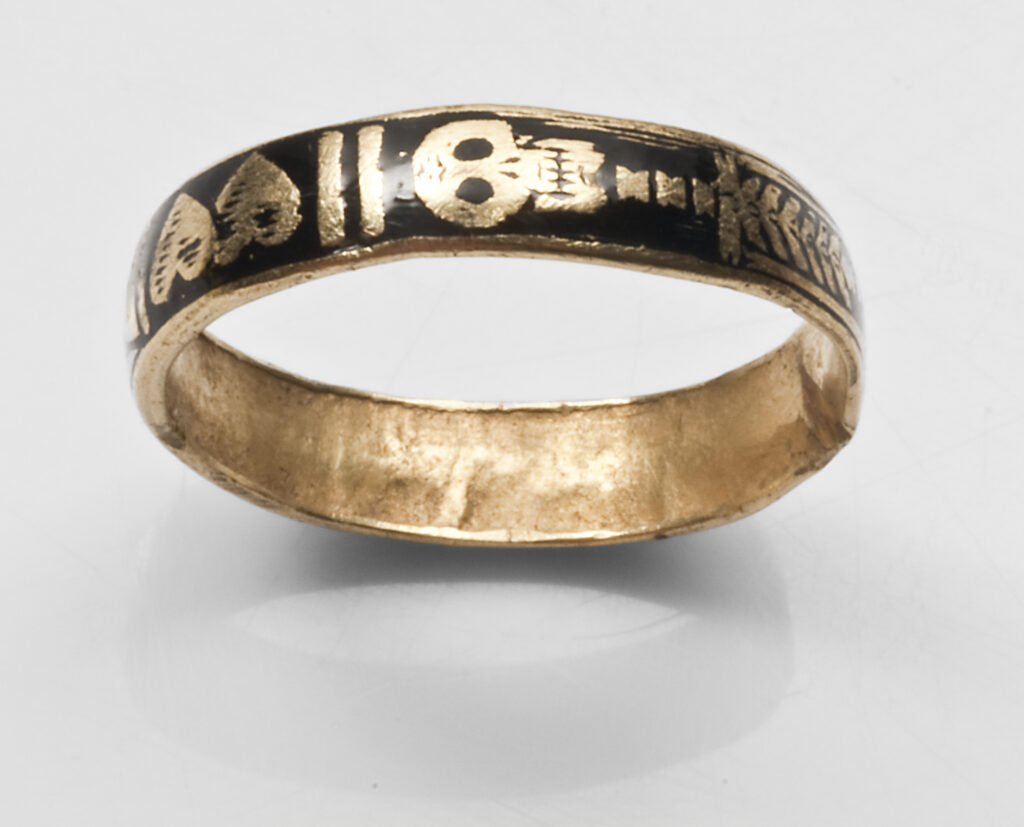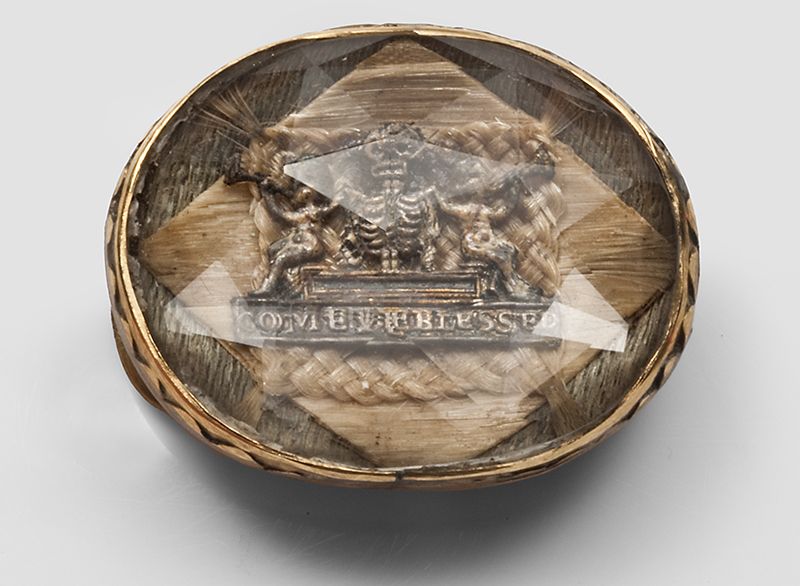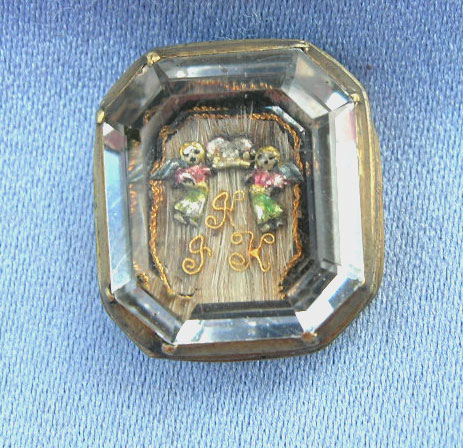Ribbon Slides, The Beginning
Ribbon slides of this nature are early examples of the move towards wide-spread jewellery mementos during the post restoration period. Unlike the previous period, the move from the memento mori ideal provided a space where mourning could become a matter of personal interest. Ecclesiastically, the earlier change towards Protestantism facilitated this and the trauma of the English Civil War during the Stuart Era enforced an evolving custom that differed to that of mainstream Europe.
During the English Restoration period, the shift of Memento Mori from a statement of mortality to the symbolism surrounding death and grief was complete. Gone was the clear establishment of a class that could afford to flaunt its wealth, standard of living and changed were the classes below that could not afford to live in such an almost narcissistic paradigm. Wearing a jewel to show that you will be judged and to live life for all its benefits is quite a grand statement during times with high mortality rates and a more feudal-based system of government, but during the 1670s-80s, there’s a strong shift to higher industry, specialised work and education. Politically, England was recovering from a civil war and the reinstatement of the kingship in Charles II in 1660, the Great Plague of London in 1665 and the Great Fire of London in 1666. There was a high mortality rate and Charles II was only beginning the process of the Restoration. Hence, pieces like this could allow themselves to become more commonplace, the symbols of death could be appropriated for an industry that was reacting to the execution of a king and a subsequent civil war, it could pick up on the nuanced tokens of affection that became popular from this and it could produce a product that was relatively easier to produce and almost the same to sell.
Considered to be earlier pieces, memento mori (“Remember you will die,” “Remember that you are mortal”) jewellery, or the statement of Memento Mori on objects previous to this time are not true mourning pieces, but a statement on mortality. Examples of these can be seen in other sections of Art of Mourning (search for ‘Memento Mori’) , where pieces do not denote a memorial, but a statement on the life (and lifestyle) of the wearer, which lends to religious piety and the threat of final judgement. Prior to the restoration period, portraits of Charles I would be worn secretly, usually hidden in lockets or placed in rings, to show the devotion of royalists to the crown. From this, the mourning custom grew. Mementos could be left to loved ones and the custom of mourning in its growing form became a personal ideal, rather than one central to the church.
Further Reading
> Queen Mary II Memento Mori Slide
> How Society Entered Mourning: c.1680-1700 Memento Mori Mourning Ring
> Skulls, Rings, the 19th Century… What We Must Ask
> c.1680 Memento Mori Skeleton Ring
> Elaborate Rococo Memento Mori Ring, 1740








